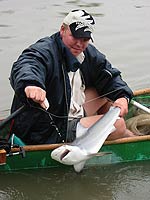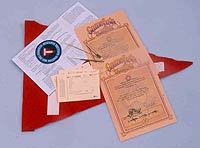Catch
Until quite recently, very little information has been available on the actual numbers of sharks and rays caught by recreational fishers in Australia. In 2001 a national 12-month survey was done in an attempt to determine actual numbers of all fish caught (recreationally) throughout Australia. The survey did estimate how many sharks were caught, but unfortunately, because sharks and rays were not a major part of the total catch, they were not identified to species level.
Overall, the survey found that around 228,000 sharks and rays were caught (and kept) recreationally.
However, the most important thing learned from the survey was that a very high percentage (82 percent) of sharks and rays caught were released back into the water. During the year of the survey, over a million sharks and rays were released.
In order for the information collected in surveys like this to be useful, the catch of sharks and rays needs further classification, so it is known which species may be most at risk of over-fishing. Also, because so many of these animals are released, there needs to be further research into how many of them survive after being caught and released. Tag and Release
Tag and Release
Shark tagging by recreational fishers was first done in the United States in 1963. This tagging program ran on a volunteer basis and was highly successful. The program has been used as a model all around the world since then.
In Australia, a national gamefish-tagging program began in 1973, and tagging of sharks continues, mainly in New South Wales, Victoria and South Australia. Twenty thousand sharks have been tagged and released since 1973 and about 400 of those have been recaptured and reported. This has allowed scientists to learn a great deal about the biology of sharks, which are generally very difficult to study.
The main species of shark tagged by Australian recreational fishers are shortfin mako ( Isurus oxyrinchus ), hammerhead (Sphyrna species), blue ( Prionace glauca ), and whaler sharks (Carcharhinidae family).
The results of this voluntary tagging effort have been very valuable in terms of determining the growth rates and movements of these sharks. Tagging is also able to tell us something about the life expectancy of sharks, and how big they will grow.
|

Fishing for river whalers, also
known as bull sharks
(Carcharhinus leucas).
(© Neil Schultz)

Shark tagging gear
(© Julian Pepperell)
|
